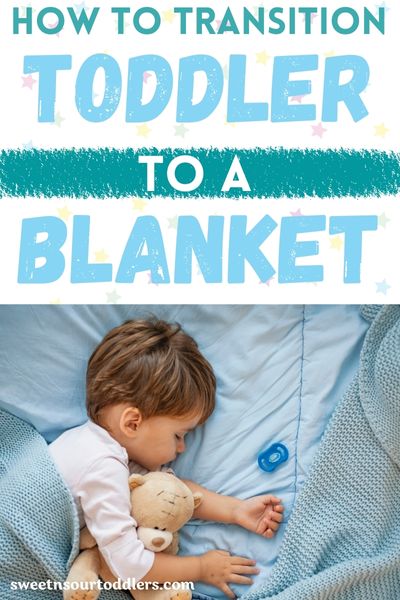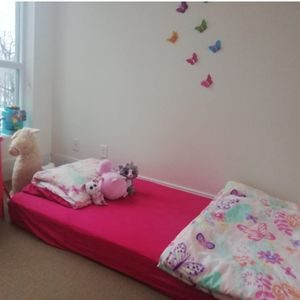Wondering how to transition your toddler to a blanket? Read on for 5 expert tried and tested hacks.
Sleep sacks are the most wonderful things ever. They keep your baby warm and snug and they ensure that your baby sleeps through the night. But alas, all good things must come to an end. Now that your baby has transformed into a curious, energetic little toddler, it may be time to make the shift from a sleep sack to a blanket.
Don’t panic.
Here are some awesome hacks that parents worldwide use to make this a smooth transition. Before getting into the tips, lets go over some basic sleep safety advice every new parent should be aware of.
Why are blankets unsafe for babies
The American Academy of Peadiatrics (AAP) recommends that any loose bedding or items like blankets, stuffies or duvets should be kept out of a child’s crib for the first year of life. This is because they pose the risk of suffocation – the blanket can cover your baby’s face and they won’t have the ability to remove it.
When is it safe to start using a blanket
According to the AAP, kids should only start using a blanket after the age of 1 and if they are ready. By this age the risk of SIDs has significantly reduced because your little one has the ability to roll over and pull things off themselves.
You may be tempted to offer your baby a soft, warm blanket to help comfort them at night. However, blankets are not recommended until your baby reaches at least 12 months old because they can increase the risk of accidental suffocation
webmd.com
This post is about how to transition your toddler to a blanket
When to Transition Toddler from Sleep Sack to Blanket
This post contains affiliate links. As an Amazon Associate I earn from qualifying purchases.

1. When your toddler has outgrown the sleep sack
The first thing to consider is your little ones size. Have they outgrown the sleep sack?
Most sleep sacks are made for kids between the ages of 18-24 months. If the largest sleep sack of size xl is starting to seem small for your toddler, it’s time to transition to a blanket.
2. When your toddler keeps squirming out of the sleep sack
The next thing you want to consider is your baby’s comfort. Are they snug and comfy in the sleep sack or do they seem restless?
If they’re constantly struggling to squirm their way out of the sleep sack it could be an indication that its time to shift to a more loose covering like a lightweight blanket.
3. When the sleep sack starts hindering their movement
While it’s important for toddlers to be warm and snug at night, it’s equally important that they have adequate mobility.
So if it seems that the sleep sack is hindering their ability to freely move about then it’s to make the move to a blanket.
If your little one gets frustrated by their limited mobility, you can expect them to strongly resist being put into their sack.
sleepadvisor.org
4. Before starting the transition from a cot to a toddler bed
It’s best to transition your toddler from sleep sack to blanket while other things in their life remain constant.
Remember: moving from a sleep sack to a blanket is a big change for a little one so try to ensure that it’s done at a time when other things in their life aren’t changing.
Try making this transition before moving your child from a cot to a bed. Once they have adjusted to the change of using a blanket, you can make the transition from cot to bed.
5. Before you’ve started toilet training
Using the same logic as above, try to make this transition before you start toilet training. Because too many changes all at once will overwhelm your toddler.
Ideally this is what the transitions should look like: sleep sack to blanket, crib to bed and then starting off on toilet training.
(of course every child is different and will follow a different course so this is just a rough time line to keep in mind)
How to Transition Toddler from Sleep Sack to Blanket
Now that you know when to make the transition, let’s go over 5 helpful tips on HOW you can make this transition as smoothly as possible.
1. Transition to a wearable blanket
One of the best ways to make this transition as smooth as possible is to start with wearable blankets. These are a mix of sleep sacks and blankets while having the benefits of both.
Wearable blankets are superb lifesavers for parents because they can’t be kicked off unlike blankets so you don’t need to worry about your child waking up cold.
These are the wearable blankets on Amazon that parents are loving:
Premium Polar Fleece, Indoor Wearable Blanket
Muslin Sleeping Bag and Sack, Premium Cotton Breathable
TEALBEE DREAMSUIT: Baby & Toddler Wearable Blanket
2. Dress your child keeping in mind the temperature
It’s important to dress your child according to the temperature of the room they are sleeping in. Many parents tend to worry that their child will be cold at night and end up over layering them.
This can lead to the body overheating and actually preventing your child from getting a good night’s sleep.
A good rule of thumb is to dress your child with one light layer more than what you are wearing. It’s also important to make sure that they are wearing pjs made from breathable material such as cotton.
Note: It’s SUPER important to make sure that your child is sleeping on an organic, non toxic mattress that is free of all harmful chemicals.
As alarming as it is to know, most mattresses for kids are full of chemicals like polyurethane foam and flame retardants. These have long term seriously harmful implications on a child’s health.
So if you haven’t done so already, make the switch from a regular kids mattress to an organic one.
This Organic 2 in 1 mattress by Naturepedic is made from the safest ingredients on earth. It has raving reviews from parents and has won the Good Housekeeping 2022 Parents Award.
That’s because it’s one of the only mattresses out there that’s breathable, organic PLUS WATERPROOF (this will make your life so much easier when potty training!!!)
You can check out more Naturepedic products here and see for yourself why it’s a go to brand for every parent looking for safer sleep solutions.
3. Start off with a lighter blanket
My toddler could never ever keep a blanket on her during the night. She’d always kick it off. As she got older she was able to tell me that the blanket made her feel hot and uncomfortable.
I started using a light weight blanket and tadaaa. No more blankets being kicked off at night time (hello peaceful nights!)
4. Teach the concept of using a blanket in a fun way
Remember, your child hasnt ever used a blanket so they need some time to get familiar with things like pulling it up over themselves and pulling it down if they feel hot.
Use nap time, rest time or cuddling on the couch time to introduce the blanket to your little one. You could even make up some silly blankie games to get your child psyched about using it at night time.
5. Dress them for bed as if they won’t be using the blanket
The blanket is going to get kicked off a lot. And I mean a lot (if you haven’t already, read my post on 6 brilliant hacks to stop your toddler kicking off the blanket)
So keep in mind that the blanket will probably spend most of the night on the floor next to the bed. And in that case you need to dress your child warmly enough so they don’t wake up cold.
Factors to consider when choosing the right toddler blanket
Material
It’s always ideal to go for breathable fabrics. Try to opt for muslin and organic cotton blankets rather than polyester or wool fabrics.
Size
When starting your little one off with a blanket, it’s always best to go for a smaller sized one. This will be more manegable for your little one. Larger sized blankets can be problematic as your toddler can get tangled in them.
Larger blankets can present strangulation and suffocation hazards that smaller blankets do not present — even after your child has turned 1
healthline.com
Thickness & weight
Always opt for a more lightweight blanket especially when first starting out. You should not use use heavy weighted blankets when transitioning babies to blankets. These can weigh your child down and become a cause of suffocation.
What type of blanket is safe for toddlers to use
According to Healthline, it’s best to use blankets that are made of fabrics such as cotton or muslin. These are breathable and much safer than using thicker blankets.
“The fabric of the blanket may influence its safety and whether it is appropriate to offer your sleepy baby. Blankets made from fabrics like muslin that can be breathed through are a better option for little ones than thick, quilted blankets”
healthline.com
Best Blankets for Toddlers (On Amazon) That Parents and Toddlers Are Loving:
1. 3 Layer Toddler Blanket, Muslin Cotton Jacquard Bed Blankets, Lightweight Thermal Baby Blanket
2. BURT’S BEES BABY – Reversible Blanket, Nursery, Stroller & Tummy-Time Organic Jersey Cotton Quilted
3. Clover & Sage Organic Muslin Baby Toddler Blanket – 100% Hypoallergenic
4. EMME Muslin Baby Blankets 100% Cotton 6-Layer
5. TILLYOU Micro Fleece Plush Soft Toddler Blanket
Are you an over tired parent who can’t seem to get your child to sleep? Do you wish there was a way to sleep train your child WITHOUT using the cry-it-out method?
I was in the same boat. I wanted to use a gentle approach that minimised any crying and at the same time helped my little one successfully sleep by herself.
After much research I stumbled upon a method that worked wonders for us.
Within a week, my little one was happily sleeping by herself. The best part was that it didn’t involve any crying! You can read my detailed post where I go over the step by step process I used to get my little one sleeping in her own bed within a week!
You can also check out the Sleep Lady Shuffle and see for yourself why this method has helped over a million families find gentle, customized sleep solutions—and get some rest.
Faqs:
When can toddlers sleep with a blanket
According to the AAP kids can start sleeping with blankets after the age of 2. By this time the risk of SIDs has reduced considerably since kids can roll about and have greater mobility.
When should you stop using sleep sacks
If your child has outgrown the sleep sack, tries to constantly wriggle out of it or seems visibly uncomfortable and retrainted in the sleep sack then it’s time to transition to a blanket instead.
How do I transition my toddler out of a sleep sack
Using a wearable blanket is one of the best ways to transition your child out of a sleep sack. Wearable blankets have the advantage of being snug and warm but they also dont constrain your child’s movement unlike a sleep sack. Lastly, wearable blankets can’t be kicked off at night so that’s a big win.
How do I get my 2 year old to sleep with a blanket
One of the best ways to get your child to sleep with a blanket is to use a wearable blanket. This way it can’t be kicked off. Another hack is to use a lightweight blanket which your child finds comfortable. Lastly, you can use sheet straps to prevent the duvet or blanket from being kicked off.
This post was all about how to transition your toddler to a blanket
Liked this post? Share it with another toddler parent who could benefit.
Other post you might enjoy:
9 Incredible Products That Actually Help Promote Toddler and Baby Sleep
6 Brilliant Hacks to Stop Your Toddler Kicking Off the Blanket
Toddler Unzipping the Sleep Sack? 7 Genius Tactics To Try
7 Genius Hacks to Try When Toddler’s Bedtime Routine Takes Too Long
10 Awesome Tips to Handle A Toddler Cranky After Nap





Leave a Reply